Spatial and Temporal Changes in Vegetation Cover in the Three North Protection Forest Project Area Supported by GEE Cloud Platform
Abstract
:1. Introduction
2. Materials and Methods
2.1. The Study Area
2.2. Data Sources
2.3. Research Method
2.3.1. Vegetation Coverage Calculation
2.3.2. Trend Analysis
2.3.3. Analysis Related to Climatic Factors
2.3.4. Land Use Transfer Matrix
3. Results
3.1. Characteristics of Temporal Changes in Vegetation Cover
3.2. Trends in Vegetation Cover
3.3. The Topographic Effects of FVC
3.4. Factors Influencing Vegetation Cover Change
4. Discussion and Conclusions
Author Contributions
Funding
Data Availability Statement
Conflicts of Interest
References
- Fernández, R.J. Do humans create deserts? Trends Ecol. Evol. 2002, 17, 6–7. [Google Scholar] [CrossRef]
- Wang, M.; Lyu, Y.; Wu, C. International Research Progress of Land Degradation Neutrality and Its Implications in China. China Land Sci. 2020, 34, 64–74. [Google Scholar]
- Jiang, Z. Integrated Ecosystem Management of Degraded Lands in Western China-Presentation at the 2005 Annual Academic Conference of the Chinese Association for Science and Technology. World For. Res. 2005, 5, 3–6. [Google Scholar] [CrossRef]
- Huang, S.; Li, X.; Wu, B.; Pei, L. Analysis of land degradation and driving forces in the Three North Protection Forest Project area in the past 25 years. Acta Geogr. Sin. 2012, 67, 589–598. [Google Scholar]
- Baozhang, C.; Guang, X.; Nicholas, C.C.; Philippe, C.; Ranga, B.M. Satellite-observed changes in terrestrial vegetation growth trends across the Asia-Pacific region associated with land cover and climate from 1982 to 2011. Int. J. Digit. Earth 2016, 9, 1055–1076. [Google Scholar] [CrossRef]
- Zhu, C.; LI, J.; Shen, Z.; Shen, Q. Spatiotemporal dynamics of vegetation activities in the lower reach of the Tarim River based on MODIS intensive time series data. Resour. Sci. 2019, 41, 591–600. [Google Scholar]
- Senseman, G.M.; Bagley, C.F.; Tweddale, S.A. Correlation of rangeland cover measures to satellite-imagery-derived vegetation indices. Geocarto Int. 1996, 11, 29–38. [Google Scholar] [CrossRef]
- Zhang, Y.; Li, X.; Chen, H. A review of multi-scale remote sensing and field measurement methods for grassland vegetation cover. Adv. Earth Sci. 2003, 18, 85–93. [Google Scholar]
- Han, J. Change of Fractional Vegetation Cover in Northeast Asia from 2000 to 2011. Master’s Thesis, Northeast Institute of Geography and Agroecology, Chinese Academy of Sciences, Harbin, China, 2012. [Google Scholar]
- Duo, A.; Zhao, W.; Gong, Z.; Zhang, M.; Fan, Y. Temporal analysis of climate change and its relationship with vegetation cover on the north china plain from 1981 to 2013. Acta Ecol. Sin. 2017, 37, 576–592. [Google Scholar]
- Zhong, Q.; Hu, J.; Kang, J. Study on vegetation coverage in daning mining area based on pixel dichotomy. Met. Mine 2021, 11, 197–203. [Google Scholar] [CrossRef]
- Zhu, L. Study on the Spatial-Temporal Variation of Vegetation Coverage and Karst Rocky Desertification Based on MODIS Data. Ph.D. Thesis, Southwest University, Chongqing, China, 2018. [Google Scholar]
- Liu, C.; Zhang, L.; Zhou, Y.; Zhang, B.; Hou, X. Retrieval and analysis of grassland coverage in arid Xinjiang, China and five countries of Central Asia. Pratacultural Sci. 2016, 33, 861–870. [Google Scholar]
- Liu, R.; Xu, L.; Feng, F.; Liu, Y.; Zhang, X. Spatiotemporal Variation of Vegetation Coverage in Wuhai City from 2000 to 2018. Res. Soil Water Conserv. 2022, 29, 265–273. [Google Scholar] [CrossRef]
- Tong, S.; Bao, Y.; Zhang, Q.; Du, W. Spatiotemporal changes of vegetation coverage in inner mongolia based on the dimidiate pixel model and intensity analysis. Ecol. Environ. Sci. 2016, 25, 737–743. [Google Scholar] [CrossRef]
- Yi, Y.; Hu, X.; Shi, M.; Kang, H.; Wang, B.; Zhang, C.; Liu, C. Vegetation dynamics and its relationship with climate factors in the middle reaches of the Yangtze River Based on MODIS NDVI. Acta Ecol. Sin. 2021, 41, 7796–7807. [Google Scholar]
- Li, M.; Yin, L.; Zhang, Y.; Su, X.; Liu, G.; Wang, X.; Ao, Y.; Wu, X. Spatio-temporal dynamics of fractional vegetation coverage based on MODIS-EVI and its driving factors in Southwest China. Acta Ecol. Sin. 2021, 41, 1138–1147. [Google Scholar]
- Sang, G.; Tang, Z.; Deng, G.; Guan, Q.; Chen, H.; Li, C.; Wang, X. Study on vegetation change in hunan province based on MODIS NDVI time series data. Resour. Environ. Yangtze Basin 2021, 30, 1100–1109. [Google Scholar]
- Long, S.; Guo, Z.; Xu, L.; Zhou, H.; Fang, W.; Xu, Y. Spatiotemporal Variations of Fractional Vegetation Coverage in China based on Google Earth Engine. Remote Sens. Technol. Appl. 2020, 35, 326–334. [Google Scholar]
- Gorelick, N.; Hancher, M.; Dixon, M.; Ilyushchenko, S.; Thau, D.; Moore, R. Google Earth Engine: Planetary-scale geospatial analysis for everyone. Remote Sens. Environ. 2017, 202, 18–27. [Google Scholar] [CrossRef]
- Stefanidis, S.; Alexandridis, V.; Mallinis, G. A cloud-based mapping approach for assessing spatiotemporal changes in erosion dynamics due to biotic and abiotic disturbances in a Mediterranean Peri-Urban forest. Catena 2022, 218, 106564. [Google Scholar] [CrossRef]
- Gemitzi, A.; Koutsias, N. A Google Earth Engine code to estimate properties of vegetation phenology in fire affected areas–A case study in North Evia wildfire event on August 2021. Remote Sens. Appl. Soc. Environ. 2022, 26, 100720. [Google Scholar] [CrossRef]
- Liu, X.; Hu, G.; Chen, Y.; Li, X.; Xu, X.; Li, S.; Pei, F.; Wang, S. High-resolution multi-temporal mapping of global urban land using Landsat images based on the Google Earth Engine Platform. Remote Sens. Environ. 2018, 209, 227–239. [Google Scholar] [CrossRef]
- Shao, Y.; Wang, L.; Zhu, C.; Fang, H.; Zhang, X.; Huang, D.; Tao, L. Forest survey and spatio-temporal analysis in West Tianshan mountains supported by Google Earth Engine. Bull. Surv. Mapp. 2020, 8, 13. [Google Scholar]
- Zhang, Y.; Peng, C.; Li, W.; Tian, L.; Zhu, Q.; Chen, H.; Fang, X.; Zhang, G.; Liu, G.; Mu, X.; et al. Multiple afforestation programs accelerate the greenness in the ‘Three North’ region of China from 1982 to 2013. Ecol. Indic. 2016, 61, 404–412. [Google Scholar] [CrossRef]
- Wang, Y.; Zhang, C.; Liu, C.; Liu, C.; Zhen, L. Research on the pattern and change of forest water conservation in Three-North Shelterbelt Forest Program region, China. Acta Ecol. Sin. 2019, 39, 5847–5856. [Google Scholar]
- Xie, S.; Mo, X.; Hu, S.; Chen, X. Responses of vegetation greenness to temperature and precipitation in the Three-North Shelter Forest Program. Geogr. Res. 2020, 39, 152–165. [Google Scholar]
- Zhang, Z.; Liu, L.; Jia, Y.; Li, X. Climatic ecological adaptation of shelter forests in Three-North Regions. Chin. J. Ecol. 2009, 28, 1696–1701. [Google Scholar]
- Shen, Y.; Zhang, M. The characteristics of land resources in the “Three Norths” protective forest areas of China and the rational layout of the protective forest system. Resour. Sci. 1993, 5, 21–27. [Google Scholar]
- Li, K.; Sun, Y.; Jiang, B.; Guo, J.; Wang, Y.; Yue, D. Analysis on spatial-temporal patterns of the vegetation coverage and landslides in Bailongjiang River Basin based on the Dimidiate Pixel Model. J. Lanzhou Univ. (Nat. Sci.) 2014, 50, 376–382. [Google Scholar] [CrossRef]
- He, Q.; Wang, M.; Liu, K.; Li, K.; Jiang, Z. GPRChinaTemp1km: A high-resolution monthly air temperature dataset for China (1951–2020) based on machine learning. Earth Syst. Sci. Data Discuss. 2021, 2021, 1–29. [Google Scholar] [CrossRef]
- Qu, L.; Zhu, Q.; Zhu, C.; Zhang, J. Monthly Precipitation Data Set with 1 km Resolution in China from 1960 to 2020. 2022. Available online: https://www.scidb.cn/en/detail?dataSetId=ff7ee051d2d44ab4a221cd810bf37251&dataSetType=personal (accessed on 5 September 2022).
- Xu, X.; Liu, J.; Zhang, S.; Li, R.; Yan, C.; Wu, S. Multi-Period Land Use Land cover Remote Sensing Monitoring Dataset in China (CNLUCC). 2018. Available online: https://www.resdc.cn/ (accessed on 5 September 2022).
- Liu, J.; Zhang, Z.; Xu, X.; Kuang, W.; Zhou, W.; Zhang, S.; Li, R.; Yan, C.; Yu, D.; Wu, S.; et al. Spatial patterns and driving forces of land use change in China during the early 21st century. J. Geogr. Sci. 2010, 20, 483–494. [Google Scholar] [CrossRef]
- Ma, N.; Hu, Y.; Zhuang, D.; Zhang, X. Vegetation coverage distribution and its changes in plan blue banner based on remote sensing data and dimidiate pixel model. Sci. Geogr. Sin. 2012, 32, 251–256. [Google Scholar] [CrossRef]
- Zhang, Z.; Liu, H.; Zuo, Q.; Yu, J.; Li, Y. Spatiotemporal change of fractional vegetation cover in the Yellow River Basin during 2000–2019. Resour. Sci. 2021, 43, 849–858. [Google Scholar]
- Wu, Z.; He, G.; Huang, S.; Wang, M.; Lin, J. Terrain effects assessment on remotely sensed fractiona vegetation cover in hilly area of southern China. J. Remote Sens. 2017, 21, 159–167. [Google Scholar]
- Wang, Q.; Zhang, B.; Dai, S.; Zou, Y.; Ma, Z.; Zhang, Y. Dynamic Changes in Vegetation Coverage in the Three-North Shelter Forest Program Based on GIMMS AVHRR NDVI. Resour. Sci. 2011, 33, 1613–1620. [Google Scholar]
- Wu, Y.; Cao, Y.; Wu, B.; Li, X.; Wu, W. Retrievaland analysis of vegetation cover in the Three-North Regions of Chna based on MODIS data. Chin. J. Ecol. 2009, 28, 1712–1718. [Google Scholar]
- Kang, X.; Cao, J.; Chen, C.; Yang, J.; Wang, J. Analysis of long-term vegetation change in Ningxia with different trend methods. Bull. Surv. Mapp. 2020, 11, 23–27. [Google Scholar] [CrossRef]
- Hong, H.; Li, X.; Li, X.; Yu, F.; Yu, H.; Yang, H. The correlation between meteorological factors and NDVI in northeastern China. J. Beijing Norm. Univ. (Nat. Sci.) 2005, 41, 425–430. [Google Scholar]
- Luo, H.; Yang, C. Analysis of land-use change and its driving forces in Sichuan province from 2005 to 2015. Ecol. Sci. 2021, 40, 86–94. [Google Scholar] [CrossRef]
- Liu, R.; Zhu, D. Methods for Detecting Land Use Changes Based on the Land Use Transition Matrix. Resour. Sci. 2010, 32, 1544–1550. [Google Scholar]
- Meng, S.; Xie, X.; Zhu, B.; Wang, Y. The relative contribution of vegetation greening to the hydrological cycle in the Three-North region of China: A modelling analysis. J. Hydrol. 2020, 591, 125689. [Google Scholar] [CrossRef]
- LI, J.; Gong, c. Effects of Terrain Factors on Vegetation Cover Change in National Park of Qilian Mountains. Bull. Soil Water Conserv. 2021, 41, 228–237. [Google Scholar] [CrossRef]
- Zhou, M.; Li, J.; Zhu, K. Changes of NDVI in Different Regions of Northwest Area and Its Responses to Climate Factor. Res. Soil Water Conserv. 2015, 22, 182–187. [Google Scholar] [CrossRef]
- Shen, X.; Wu, Z.; Du, H. Variation of vegetation in the Northeast China and its response to meteorological factors. J. Northeast. Norm. Univ. (Nat. Sci. Ed.) 2013, 45, 123–130. [Google Scholar]
- Wang, Q.; Zhang, B.; Dai, S.; Zhang, F.; Zhao, Y.; Yin, H.; He, X. Analysis of the vegetation cover chang and its relationship with factors in the Three-North Shelter Forest Program. China Environ. Sci. 2012, 32, 1302–1308. [Google Scholar]
- Jin, C.; Yang, X.; Jing, H. A RS-based study on changes in fractional vegetation cover in North Shaanxi and their driving factors. Remote Sens. Nat. Resour. 2021, 33, 258–264. [Google Scholar]
- Cao, S.; Suo, X.; Xia, C. Payoff from Afforestation under the Three-North Shelter Forest Program. J. Clean. Prod. 2020, 256, 120461. [Google Scholar] [CrossRef]
- Mu, H.; Li, X.; Ma, H.; Du, X.; Huang, J.; Su, W.; Yu, Z.; Xu, C.; Liu, H.; Yin, D.; et al. Evaluation of the policy-driven ecological network in the Three-North Shelterbelt region of China. Landsc. Urban Plan. 2022, 218, 104305. [Google Scholar] [CrossRef]
- Li, X.; Shi, Q.; Chang, S.; Guo, J.; Dara, B.; Qi, J. Change of NDVI based on NOAA image in northwest arid area of China in 1981–2001. Arid. Land Geogr. 2008, 31, 940–945. [Google Scholar] [CrossRef]
- Hu, S.; Liu, J.; Mao, X. Extraction and change of vegetation coverage of 2007-2010 in Northeast China. J. Northeast. For. Univ. 2017, 45, 45–50. [Google Scholar] [CrossRef]
- Shao, S.; Shi, Q. Spatial and temporal change of vegetation cover in Xinjiang based on FVC. Sci. Silvae Sin. 2015, 51, 35–42. [Google Scholar]
- Zhang, J.; Feng, Z.; Jiang, L.; Yang, Y. Analysis of the Correlation between NDVI and Climate Factors in the Lancang River Basin. J. Nat. Resour. 2015, 30, 1425–1435. [Google Scholar]
- He, Y.; Fan, G.; Zhang, X.; Liu, M.; Gao, D. Variation of vegetation NDVI and its response to climate change in Zhejiang Province. Acta Ecol. Sin. 2012, 32, 4352–4362. [Google Scholar] [CrossRef]
- Zhou, H.; Wang, J.; Yue, Y.; Li, R. Research on spatial pattern of human-induced vegetation degradation and restoration:a case study of Shaanxi Province. Acta Ecol. Sin. 2009, 29, 4847–4856. [Google Scholar]
- Wang, J.; Zhou, W.; Xu, K.; Yan, J. Spatiotemporal pattern of vegetation cover and its relationship with urbanization in Beijing-Tianjin-Hebei megaregion from 2000 to 2010. Acta Ecol. Sin. 2017, 37, 7019–7029. [Google Scholar]
- Zhao, J.; Zhou, Y.; Deng, X. Temporal-spatial dynamic change characteristics of vegetation coverage in arid regions of Northwest China. For. Resour. Manag. 2017, 1, 118–126. [Google Scholar] [CrossRef]
- Wang, Y.; Ding, J.; Li, X.; Zhang, J.; Ma, G. Impact of LUCC on ecosystem services values in the Yili River Basin based on an intensity analysis model. Acta Ecol. Sin. 2022, 42, 3106–3118. [Google Scholar]
- Shao, Y.; Wang, Z.; Feng, Z.; Sun, L.; Yang, X.; Zheng, J.; Ma, T. Assessment of China’s forest fire occurrence with deep learning, geographic information and multisource data. J. For. Res. 2022, 6, 1–14. [Google Scholar] [CrossRef]
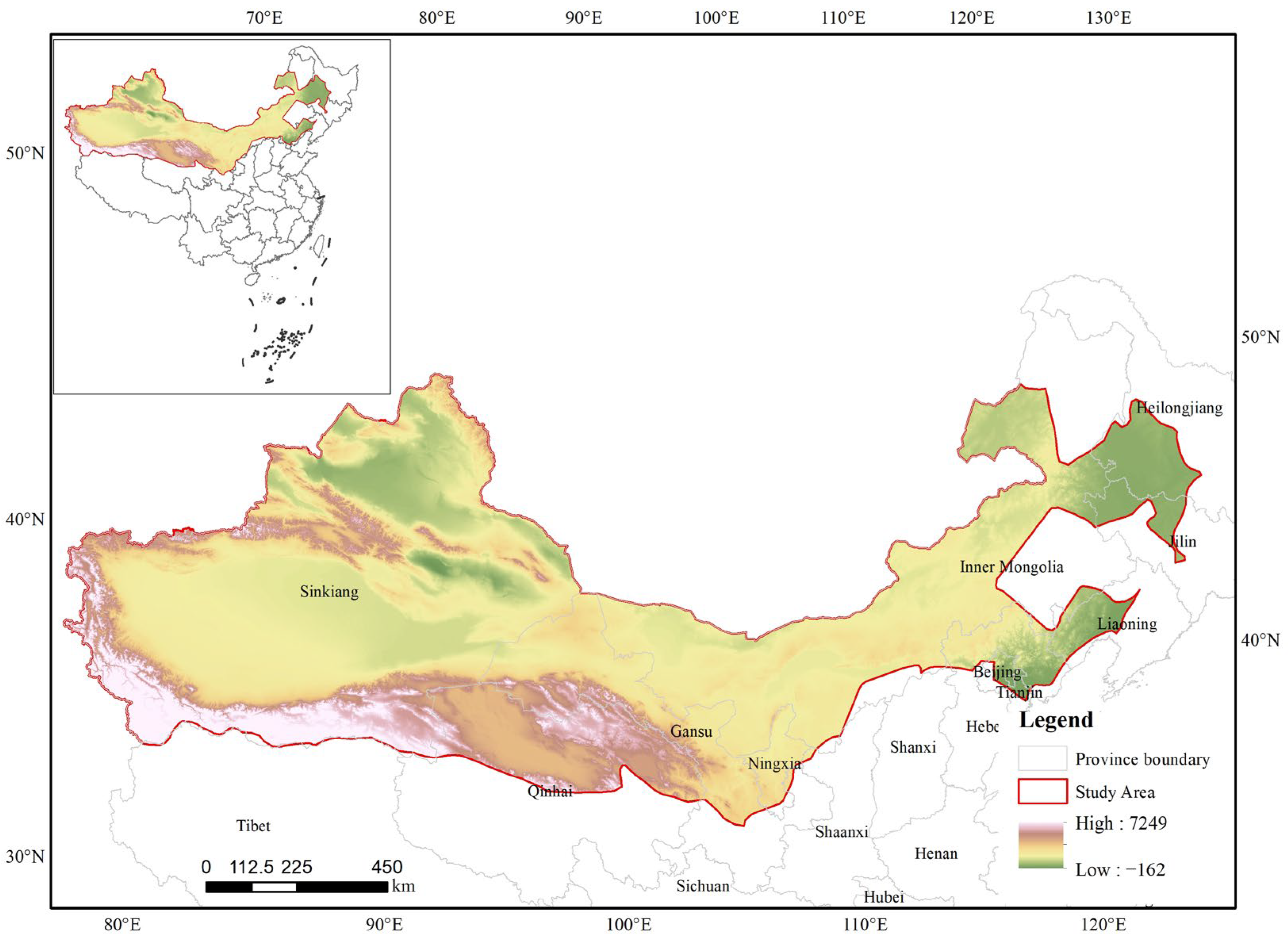
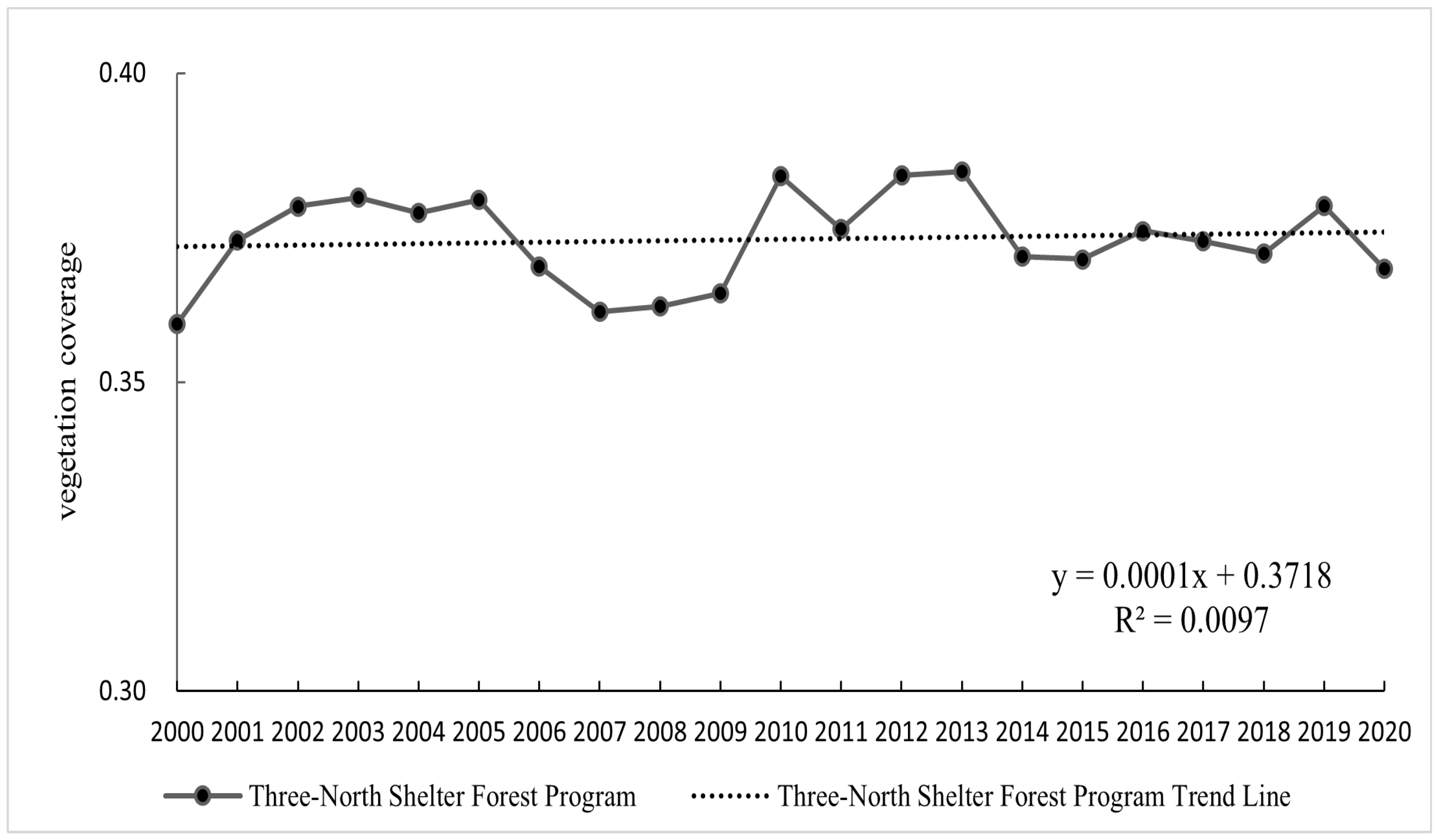
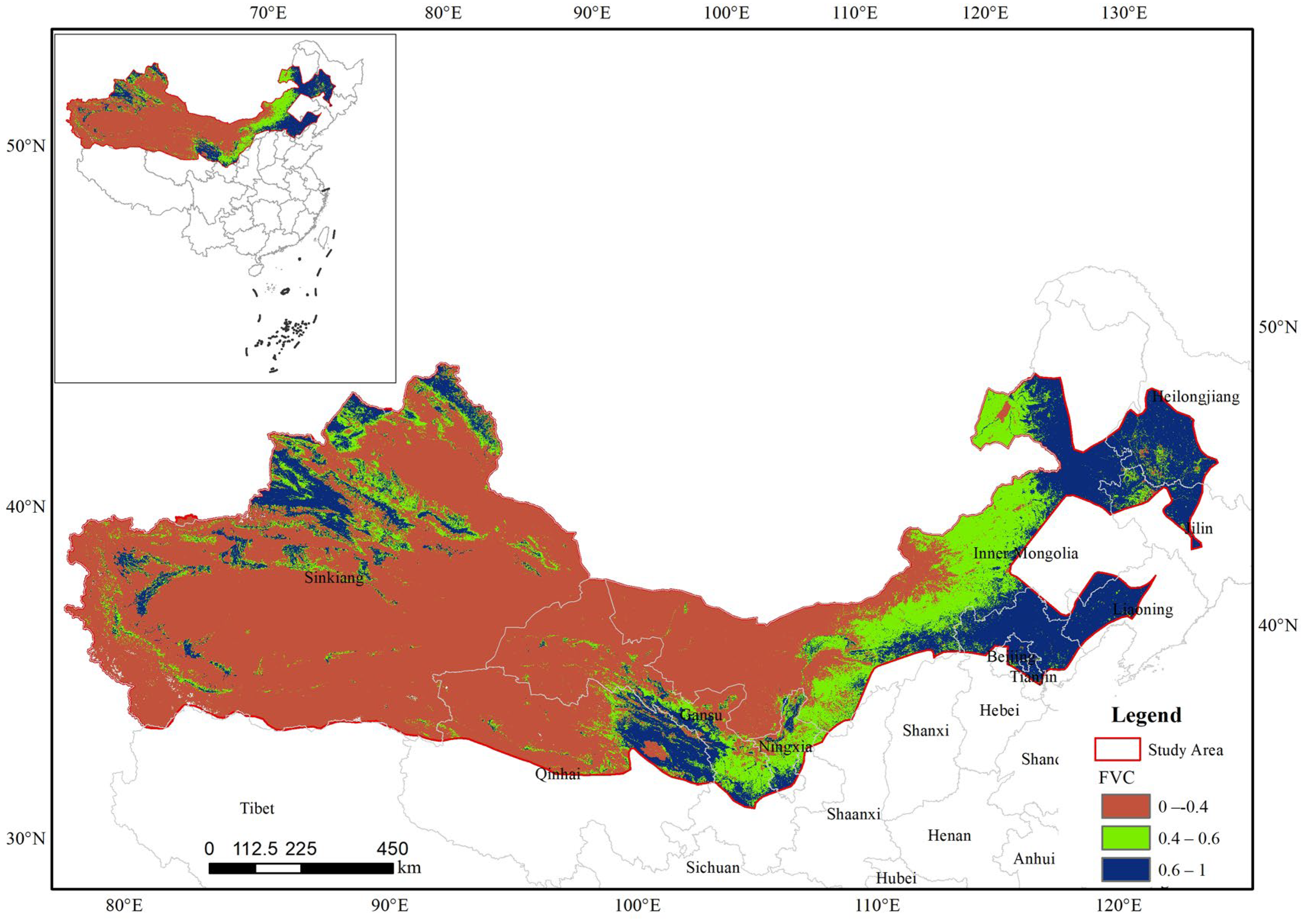
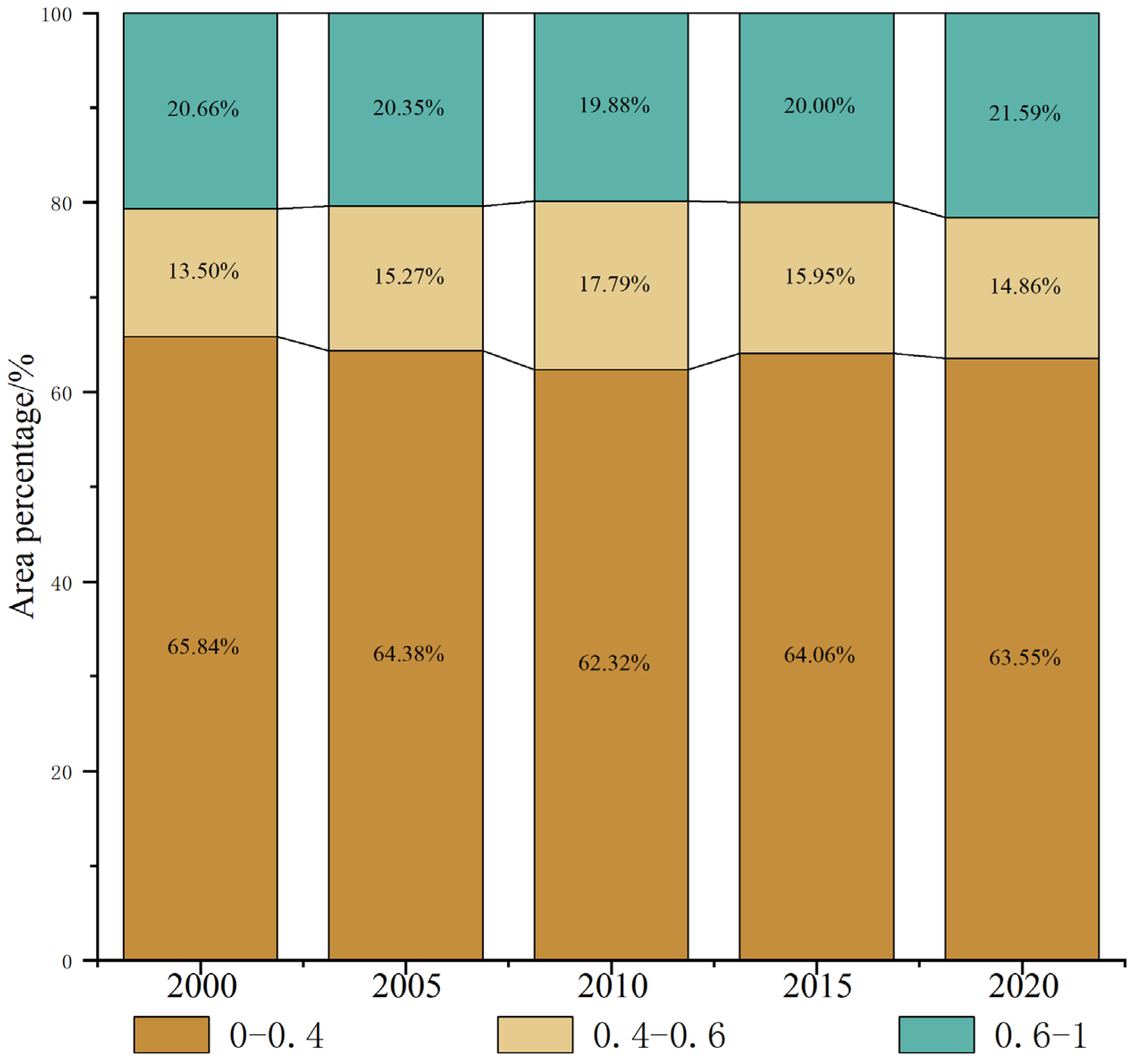
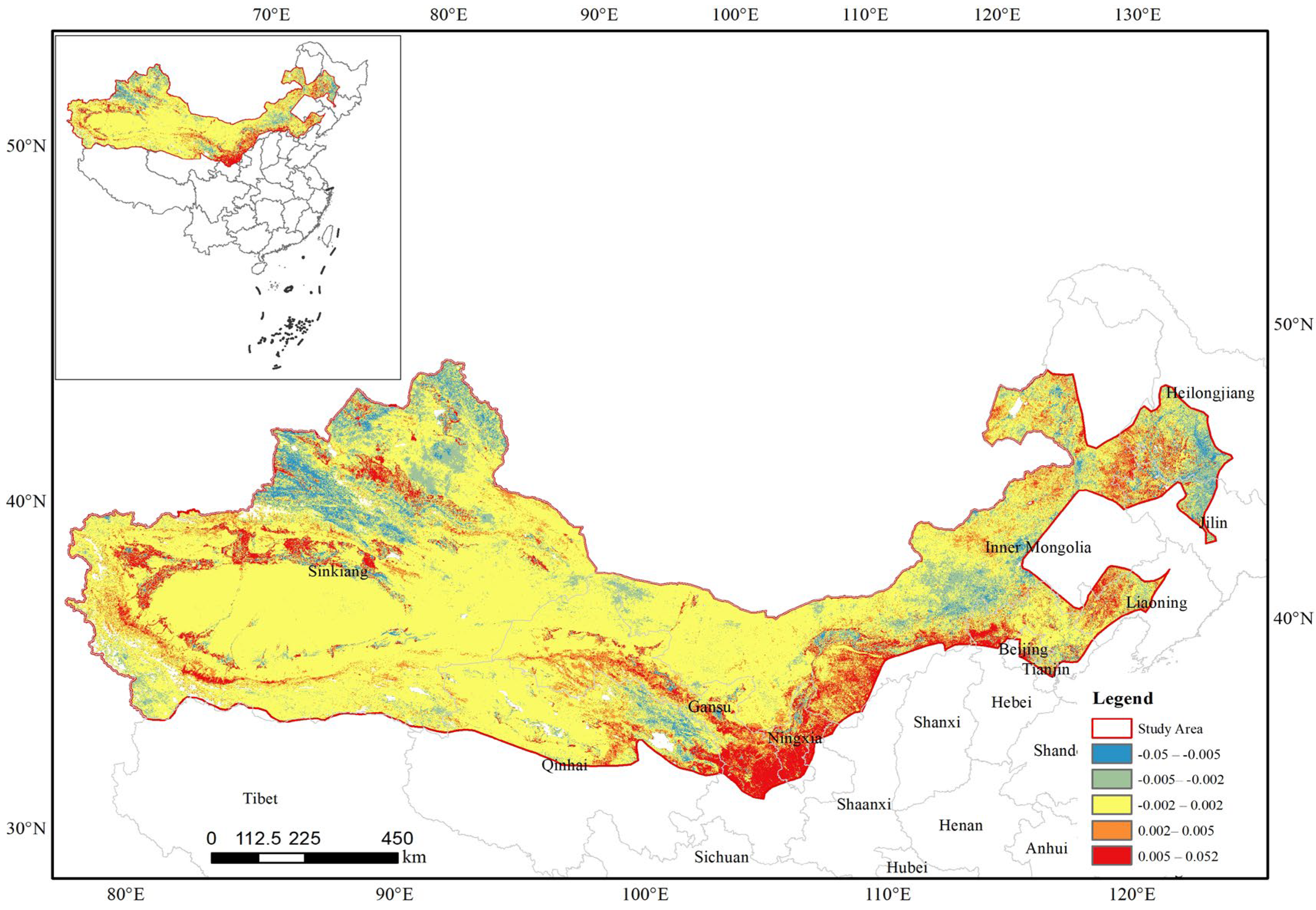
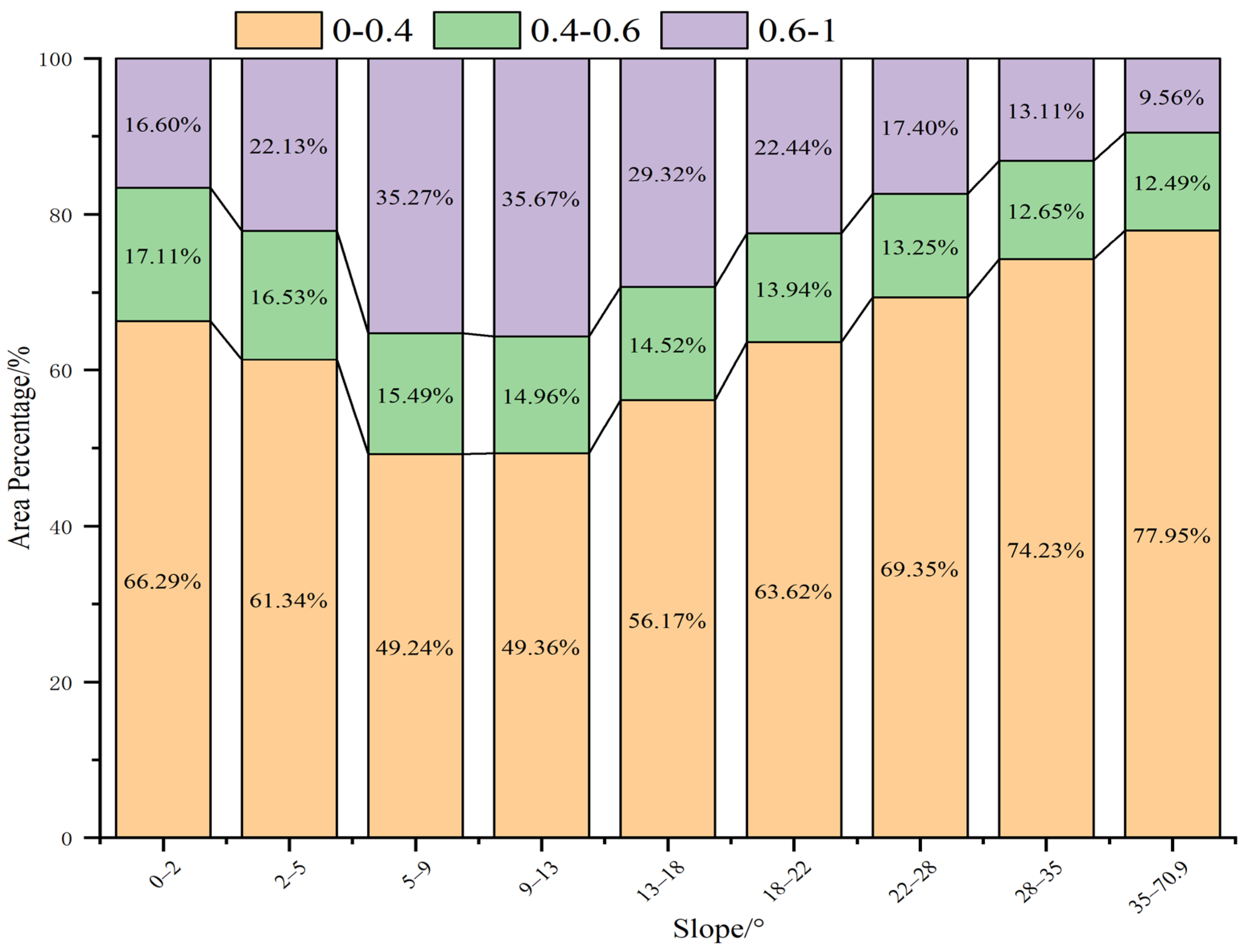
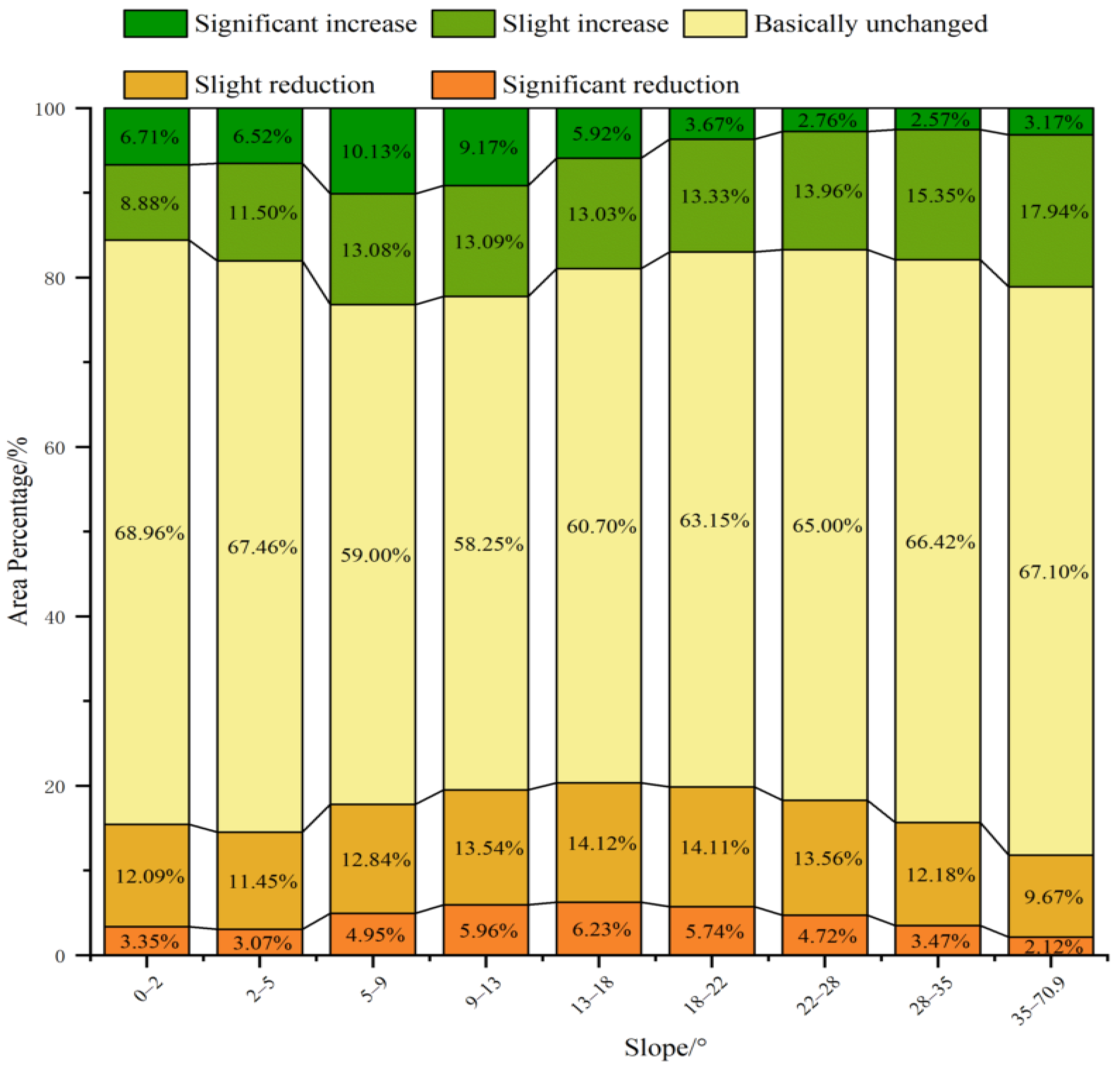
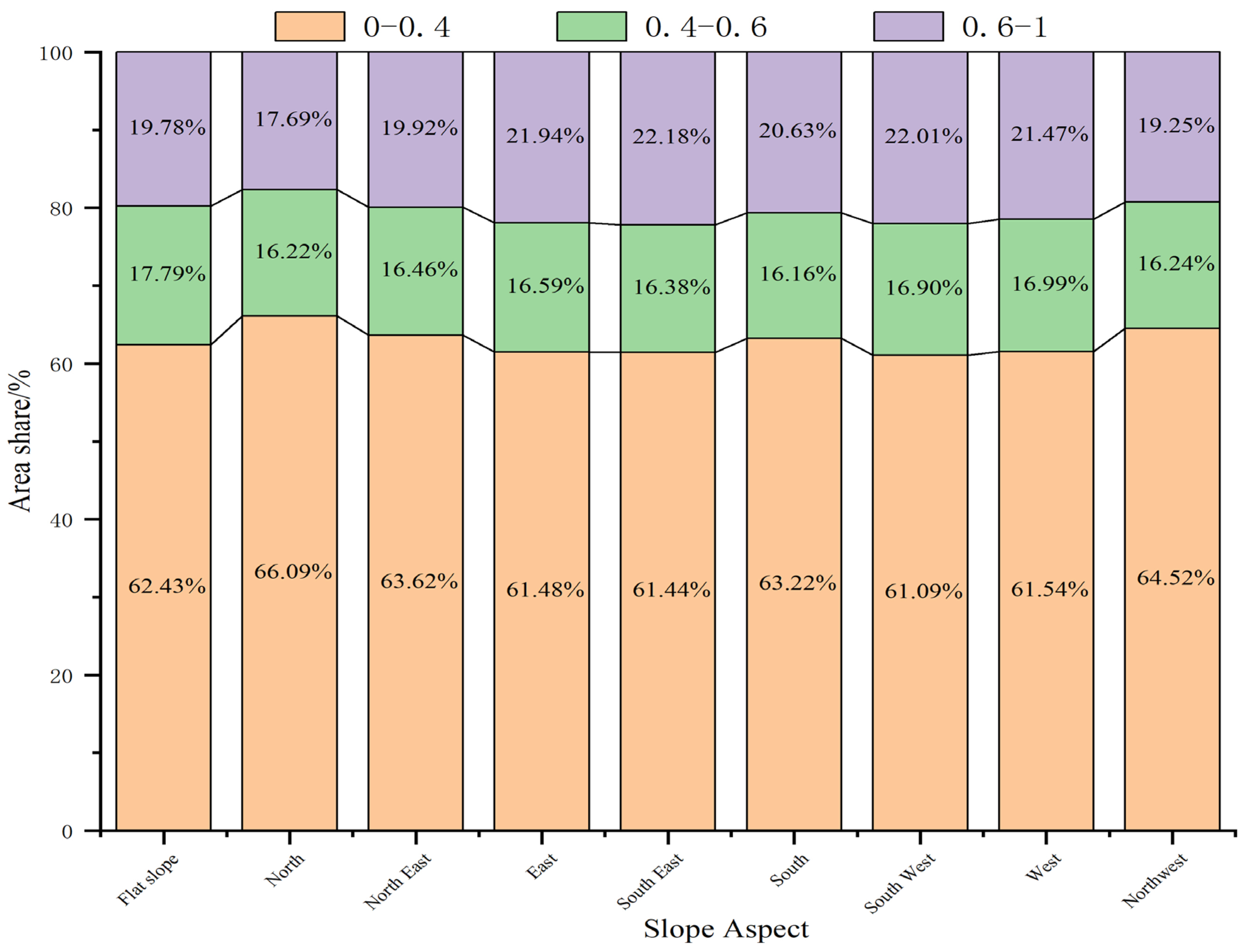

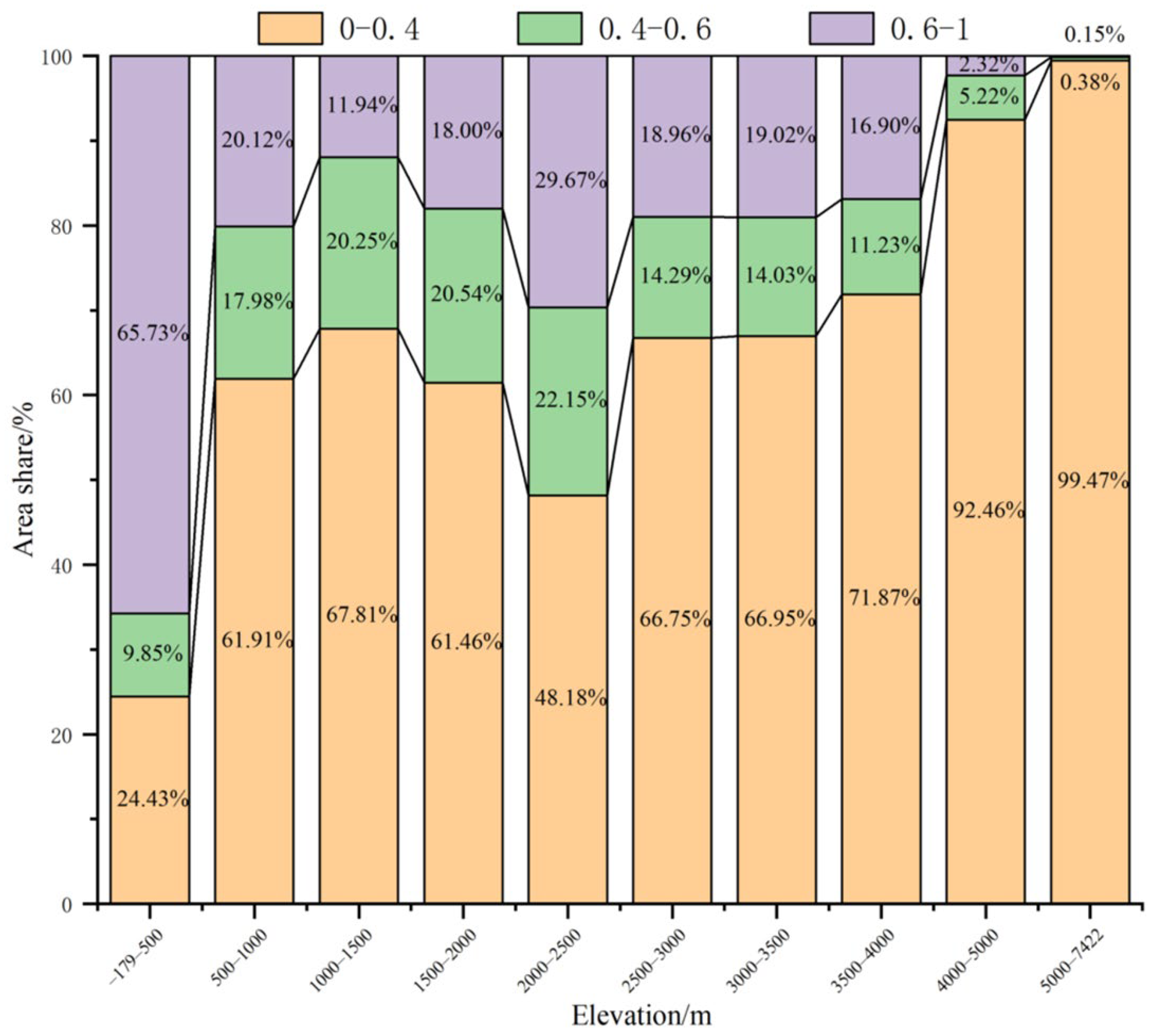


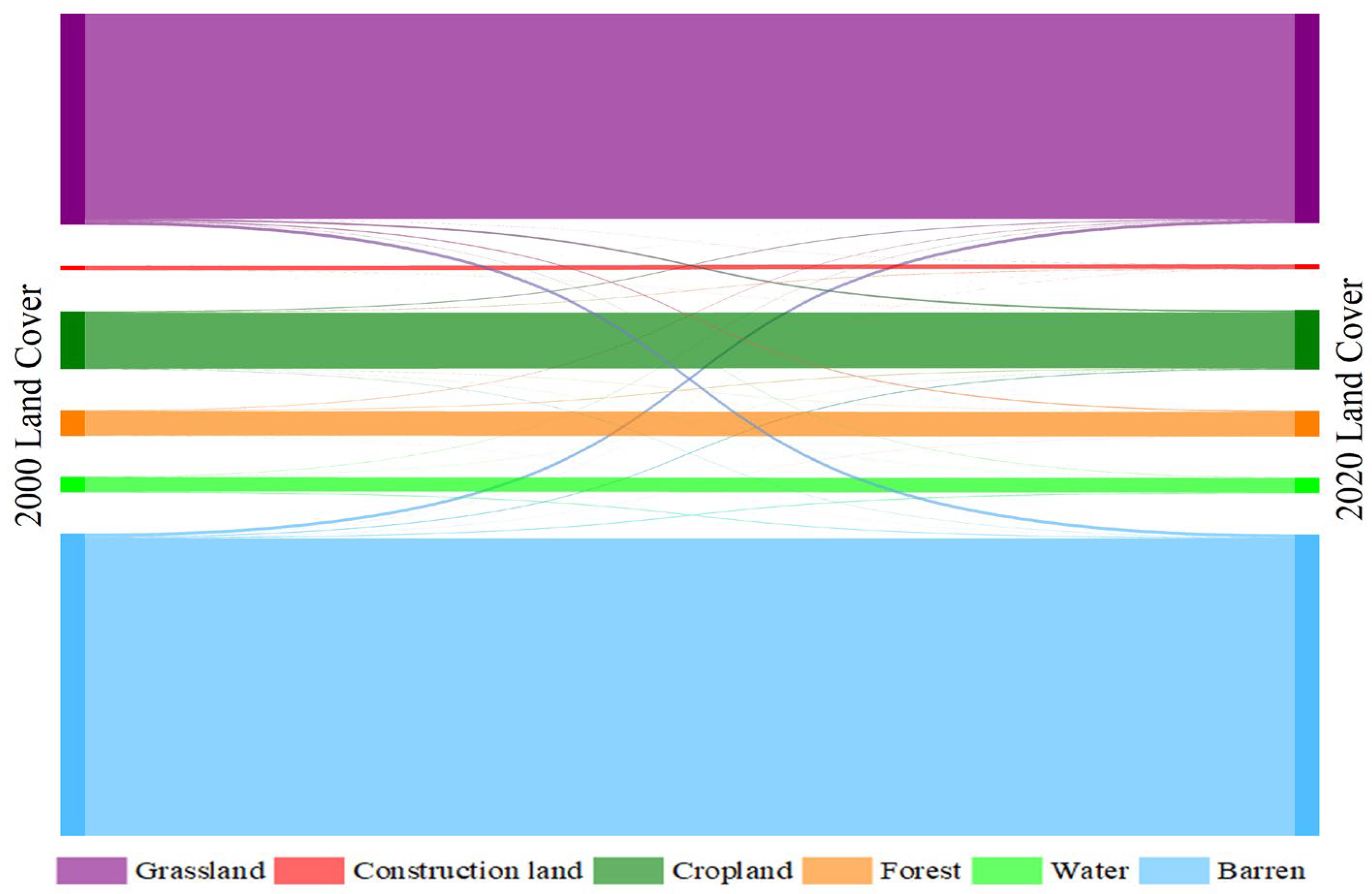
Disclaimer/Publisher’s Note: The statements, opinions and data contained in all publications are solely those of the individual author(s) and contributor(s) and not of MDPI and/or the editor(s). MDPI and/or the editor(s) disclaim responsibility for any injury to people or property resulting from any ideas, methods, instructions or products referred to in the content. |
© 2023 by the authors. Licensee MDPI, Basel, Switzerland. This article is an open access article distributed under the terms and conditions of the Creative Commons Attribution (CC BY) license (https://creativecommons.org/licenses/by/4.0/).
Share and Cite
Li, X.; Hai, Q.; Zhu, Z.; Zhang, D.; Shao, Y.; Zhao, Y.; Li, H.; Vandansambuu, B.; Ning, X.; Chen, D.; et al. Spatial and Temporal Changes in Vegetation Cover in the Three North Protection Forest Project Area Supported by GEE Cloud Platform. Forests 2023, 14, 295. https://doi.org/10.3390/f14020295
Li X, Hai Q, Zhu Z, Zhang D, Shao Y, Zhao Y, Li H, Vandansambuu B, Ning X, Chen D, et al. Spatial and Temporal Changes in Vegetation Cover in the Three North Protection Forest Project Area Supported by GEE Cloud Platform. Forests. 2023; 14(2):295. https://doi.org/10.3390/f14020295
Chicago/Turabian StyleLi, Xusheng, Quansheng Hai, Zhenchang Zhu, Donghui Zhang, Yakui Shao, Yingjun Zhao, Hu Li, Battsengel Vandansambuu, Xiaoli Ning, Donghua Chen, and et al. 2023. "Spatial and Temporal Changes in Vegetation Cover in the Three North Protection Forest Project Area Supported by GEE Cloud Platform" Forests 14, no. 2: 295. https://doi.org/10.3390/f14020295






